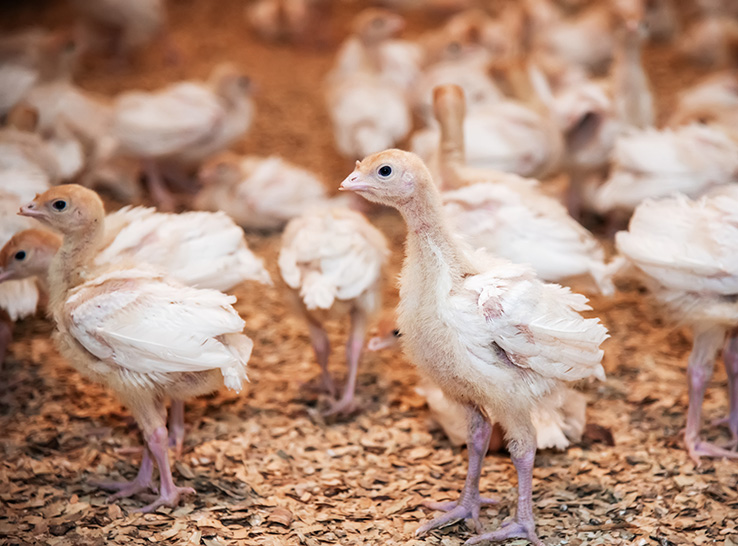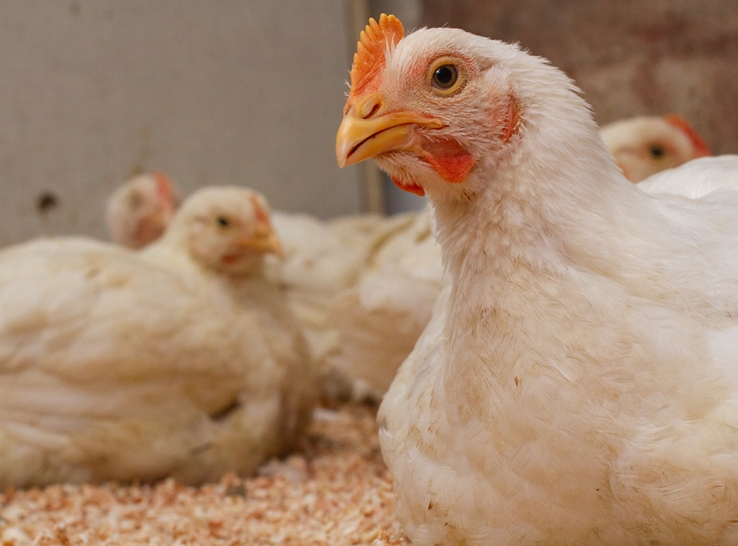A Midwestern flock of 15,000 finisher turkey hens experienced persistent respiratory disease that caused 10% to 15% mortalities.
Seeking answers, the flock veterinarian sent six dead, 8-week-old turkey poults to the Iowa State University Veterinary Diagnostic Laboratory for examination and diagnosis.
“The submitting veterinarian gave diagnostician discretion but, based on the history, suspected a viral and/or bacterial etiology,” reported Valerie Kim, Iowa State University veterinary student, at the 2024 North Central Avian Disease Conference.
Diagnostic results
At necropsy, all birds were in good body condition but exhibited moderate to severe autolysis. A moderate amount of fibrin was found on three of the hearts and both lungs of all six birds.
The diagnostician noted all of the livers and four of the spleens were enlarged.
“Based on the history of respiratory disease, high mortality and observed necropsy findings, the primary causes could include viral diseases such as Newcastle disease and avian influenza,” Kim explained.
“Potential bacterial causes of the birds’ symptoms include Escherichia coli, Ornithobacterium rhinotracheale, fowl cholera, erysipelas and Mycoplasma gallisepticum,” she added.
Additional diagnostic tests were conducted, including bacterial culture on fresh samples of bone marrow, heart, lung and spleen. They also performed histopathology and used PCR to analyze trachea samples.
“In the heart, lung and spleen, histopathology revealed heavy amounts of fibrin, and bacteria culture results demonstrated abundant E. coli,” Kim said.
“However, E. coli alone did not explain the mortality level,” she added. “Thus, we ordered PCR testing to see if other infections had been involved or were causing any underlying issues.”
PCR findings
“The PCR testing revealed a coinfection with O. rhinotracheale and Newcastle disease virus,” Kim said. “Coinfection with multiple disease agents supports the history of severe persistent respiratory disease.”
The diagnosticians weren’t finished investigating, though. “The PCR results confirmed that the tracheal sample was positive for the matrix gene of Newcastle disease virus,” she added. “We needed to run additional PCR testing for fusion gene to rule out virulent Newcastle disease virus. The result came back as negative. The next step was genotyping to determine if the virus detected was related to a vaccine or a field strain.”
The results from conventional PCR and Sanger sequencing showed the sample was related to a field strain and not a vaccine.
Coinfection with bacterial, viral agents
“I found this case very interesting with coinfections from three agents — E. coli, O. rhinotracheale and Newcastle disease virus,” Kim said. “To get results, a diagnostic process was essential to explain the case.
“We found multiple lesions on the necropsy and positive growth on bacterial culture, and we found bacteria on histopathology. Diagnostics led us to conclude that actual infection is secondary, and Newcastle disease virus is the primary infection.
“Initially, we speculated that the positive results could be attributed to their vaccine history, but further investigation discovered the Newcastle pathotype was distinct from the vaccine type,” she concluded.





